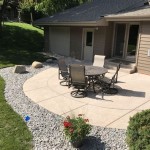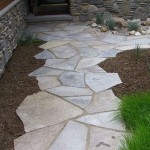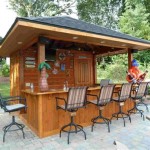How To Seal Concrete Patio Pavers In Germany
Concrete patio pavers are a popular choice for outdoor spaces in Germany, prized for their durability, aesthetic appeal, and versatility. However, even the highest quality concrete pavers can benefit from sealing. Sealing provides a protective barrier against the harsh German weather conditions, including freezing temperatures, heavy rainfall, and intense UV radiation, as well as common contaminants like oil, grease, and dirt. Understanding the process of sealing concrete patio pavers ensures a longer lifespan for the patio, minimized maintenance requirements, and preserved aesthetic value.
The environmental conditions in Germany can significantly impact the longevity and appearance of concrete pavers. The freeze-thaw cycle, prevalent during the winter months, can cause cracks and spalling as water penetrates the porous surface of the concrete and expands upon freezing. Furthermore, the acidic nature of rainwater in some regions can contribute to the erosion of the paver surface. Sealing the pavers mitigates these risks by creating an impermeable layer that prevents water and other harmful substances from penetrating the concrete.
Selecting the appropriate sealant is crucial for achieving optimal results. The market offers a variety of sealants, each with its own unique properties and application requirements. Acrylic sealants are generally more affordable and easier to apply but may not offer the same level of durability as other options. Polyurethane sealants provide excellent abrasion resistance and water repellency, making them suitable for high-traffic areas. Siloxane-based sealants are known for their breathability, allowing moisture vapor to escape from the concrete while preventing water ingress. Epoxy sealants offer exceptional chemical resistance and are often used in industrial settings but may not be ideal for residential patios due to their rigidness.
Before beginning the sealing process, proper preparation is essential. The pavers must be thoroughly cleaned to remove any dirt, debris, stains, or existing sealant. This may involve sweeping, scrubbing with a suitable cleaning solution, and pressure washing. It is crucial to allow the pavers to dry completely before applying the sealant. Moisture trapped beneath the sealant can lead to blistering, peeling, and a compromised protective layer.
Key Point 1: Choosing the Right Sealant for the German Climate
The German climate necessitates careful consideration when selecting a sealant. Factors such as average rainfall, frequency of freezing temperatures, and exposure to sunlight should all influence the choice. A sealant with excellent water repellency is paramount to protect against the frequent rainfall. Ideally, the sealant should also be resistant to de-icing salts, which are commonly used during the winter months to prevent ice formation on outdoor surfaces. UV resistance is also important to prevent fading and discoloration of the pavers over time. Breathable sealants are often preferred as they allow moisture to escape, preventing trapped moisture from damaging the pavers during freeze-thaw cycles.
For example, in regions of Germany with heavy snowfall and frequent freeze-thaw cycles, a siloxane-based sealant or a high-quality penetrating sealant might be the best choice. These sealants offer excellent water repellency while allowing the concrete to breathe, preventing moisture buildup. In regions with less severe winters but higher UV exposure, a UV-resistant acrylic or polyurethane sealant could be sufficient. Consulting with local building supply professionals who are familiar with the specific climate challenges of the region is highly recommended.
Penetrating sealants, as opposed to film-forming sealants, are absorbed into the concrete, providing protection from within. They don't change the appearance of the paver and are less prone to peeling or flaking. Film-forming sealants create a protective layer on the surface of the paver, potentially enhancing the color and providing a glossy finish. However, they are more susceptible to wear and tear and may require more frequent reapplication. The choice between penetrating and film-forming sealants often depends on personal preference and the desired aesthetic effect. However, in harsh climates, penetrating sealants generally offer superior long-term protection.
Always refer to the manufacturer's instructions for specific application guidelines and recommendations for the chosen sealant. Different sealants may require different application methods, drying times, and reapplication schedules. Failing to follow the manufacturer's instructions can compromise the effectiveness of the sealant and potentially damage the pavers.
Key Point 2: Preparing the Concrete Patio Pavers for Sealing in Germany
Thorough preparation is a non-negotiable step in the sealing process. Begin by removing all furniture, planters, and other objects from the patio area. Sweep away loose debris, leaves, and dirt. Use a stiff-bristled brush or broom to scrub the pavers and remove any stubborn dirt or stains. For heavily soiled areas, a pressure washer can be used, but caution should be exercised to avoid damaging the pavers. Use a wide fan nozzle and maintain a safe distance from the paver surface. Avoid using excessive pressure, which can erode the paver material.
Addressing stains is critical for a successful sealing project. Oil stains, grease stains, and rust stains should be treated with appropriate cleaning solutions before sealing. There are commercially available concrete cleaners specifically designed to remove these types of stains. Follow the manufacturer's instructions for applying and rinsing the cleaner. In some cases, multiple applications may be necessary to completely remove the stain. Allow the pavers to dry completely after cleaning before proceeding to the next step.
Efflorescence, a white powdery deposit that can appear on the surface of concrete, should also be removed before sealing. Efflorescence is caused by mineral salts that dissolve in water and migrate to the surface of the concrete. It can be removed by scrubbing with a wire brush and rinsing with water. In severe cases, a mild acid wash may be necessary, but caution should be exercised to avoid damaging the pavers. Always test the acid wash in an inconspicuous area first to ensure that it does not discolor or etch the concrete.
Once the pavers are cleaned and any stains or efflorescence are removed, allow them to dry completely. The drying time will vary depending on the weather conditions. Ideally, the pavers should be dry to the touch and free from any visible moisture. Using a moisture meter can help to ensure that the pavers are sufficiently dry before applying the sealant. Sealing damp pavers can trap moisture, leading to blistering, peeling, and a compromised protective layer. A general rule of thumb is to allow at least 24-48 hours of drying time after cleaning, depending on weather conditions.
Key Point 3: Applying the Sealant and Ensuring Proper Curing in Germany
The application of the sealant is a critical step that requires careful attention to detail. Choose a day with favorable weather conditions: dry weather with temperatures within the manufacturer's recommended range. Avoid applying the sealant in direct sunlight or during periods of high humidity. Direct sunlight can cause the sealant to dry too quickly, leading to uneven coverage and bubbling. High humidity can interfere with the drying process and prolong the curing time.
Depending on the type of sealant, it can be applied using a brush, roller, or sprayer. When using a brush or roller, apply the sealant in thin, even coats, working in one direction. Avoid applying too much sealant in one area, as this can lead to pooling and uneven drying. When using a sprayer, hold the nozzle at a consistent distance from the paver surface and apply the sealant in overlapping passes. Ensure that all areas of the paver surface are evenly coated.
Most sealants require multiple coats for optimal protection. Apply the second coat after the first coat has dried completely, following the manufacturer's recommended drying time. The drying time will vary depending on the type of sealant and the weather conditions. Typically, a minimum of 24 hours is required between coats. Allow the sealant to cure completely before allowing foot traffic or placing furniture back on the patio. The curing time can range from 24 to 72 hours, depending on the sealant and the weather conditions.
During the curing process, it is important to protect the sealed pavers from rain, dirt, and debris. Cover the patio with plastic sheeting or tarpaulins to prevent any contaminants from coming into contact with the sealant. Avoid walking on the sealed pavers during the curing period. Once the sealant is fully cured, the patio can be used as normal. Regularly inspect the sealed pavers for any signs of wear or damage. Reapply the sealant as needed, following the manufacturer's recommendations. The reapplication schedule will vary depending on the type of sealant, the amount of foot traffic, and the severity of the weather conditions.
Properly sealed concrete patio pavers in Germany offer a durable and aesthetically pleasing outdoor space that can withstand the challenges of the local climate. By selecting the right sealant, preparing the pavers thoroughly, and applying the sealant correctly, homeowners can protect their investment and enjoy their patio for many years to come. Regular maintenance and reapplication of the sealant will ensure continued protection and preserve the beauty of the pavers.

Sealing Tools And Techniques

Stain Proof Paver Enhancing Sealer

Pation Paver Restoration Restoring Concrete Patios Patio Ro Italiano

Suitable Sealants For Paving

Armor Ar350 Solvent Based Acrylic Wet Look Concrete Sealer And Paver

What Is The Best Stain For Pavers

Polish For No Wax Vinyl Floor

Cobble Loc Semi Gloss Paver Sealer Water Based Surface Logix Diamond Tool

What Is The Best Stain For Pavers

Outdoor Concrete Stain Sealer Direct Colors
Related Posts








